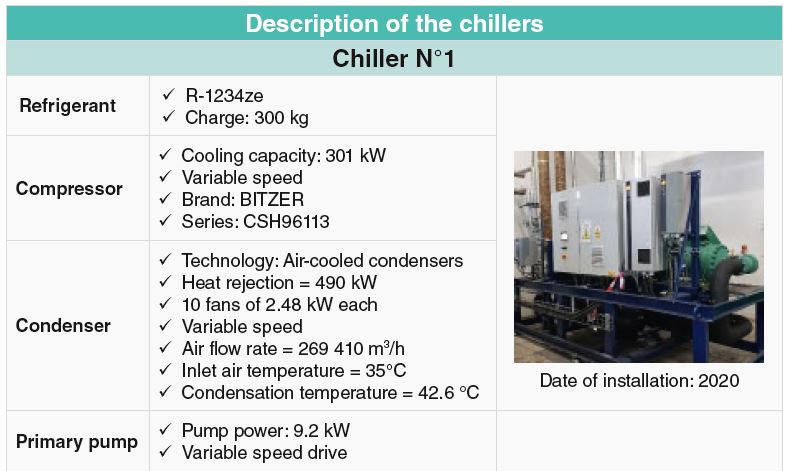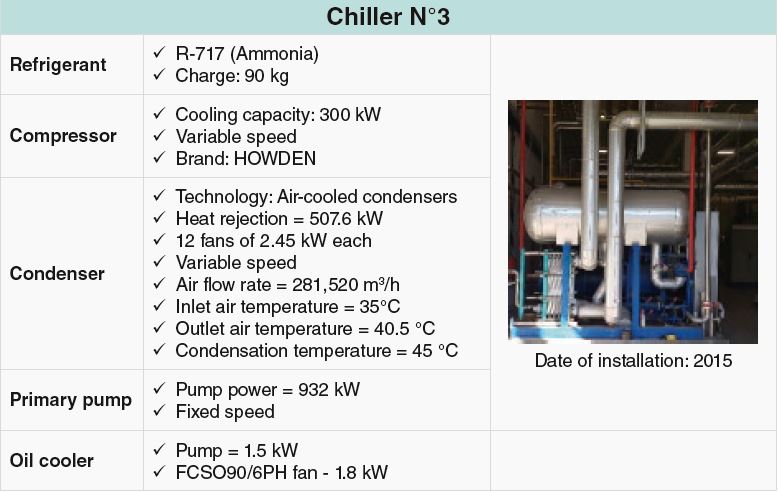Background
Optinergie, a consultancy specialising in industrial energy performance, has been is carrying out measurement campaigns on the COFRA site between May and December 2020 at the request of Quercy Réfrigération. The aim has been to calculate the overall Energy Efficiency Ratio (EER) by finely analysing the operation of the installations through physical measurement and instrumentation.
The EER is determined by the ratio between the refrigerating energy produced and the electrical energy absorbed by the refrigeration unit.
The recordings were made on :
– the flow of glycol water,
– the temperatures in the glycol circuit and the return temperature,
– electrical consumption on the general flow of the R-1234ze chillers (compressor, condenser, primary and auxiliary pumps on the same flow) and on the compressor, condenser, primary pump, oil cooler fan and oil cooler pump flows for this NH3 unit.
Note : These installations are comparable because their regulation principle is similar. The chillers are equipped with electronic speed variators. Those with R-1234ze do not have an oil cooler.
Description of the COFRA site refrigeration system
The COFRA installation comprises 4 refrigeration units operating in parallel, supplying a tank of chilled water.
Three of these chillers have R-1234ze as refrigerant, the fourth uses ammonia.


The PID (detailed implementation plan) of the primary and secondary outflows of the chillers is presented here; the flow and temperature measurements were carried out on the primary circuit of the groups each time. The symbols Q, T1 and T2 symbolise the locations of the brine flow rate, return temperature (to unit) and flow temperature (to tank) measurements respectively.

Result : better performance with R-1234ze
Measurement campaign from 13 to 27 May 2020 on chiller no. 1 containing ze with the Regandsy system inactive and chiller no. 3 containing NH3. The EER of the NH3 chiller degrades faster when the outside temperature rises. The average EERs are : R-1234ze = 1.73; NH3 = 1.29, giving an average performance difference of 25%.

Measurement campaign from 26 August 2020 to 8 September 2020 on chiller no. 1 containing ze with the Regandsy system active* (only for two days), chiller no. 2 containing ze with the Regandsy system inactive and chiller no. 3 containing NH3. This shows a general improvement in EERs (+40% approximately).


Please note : a third measurement campaign will be carried out at the end of 2020 to compare results with or without the Regandsy system over a longer period of time. The EER measured over the two days of operation with the Regandsy system was 2.95.
Conclusion
« This second campaign also confirms that R-1234ze chillers outperform the NH3 in similar operating conditions with high outdoor temperatures and greater fruit storage » stresses Quentin Camou-Juncas, Industrial Energy Performance Engineer at Optinergie.
Would you like to find out more? Read our case study.


